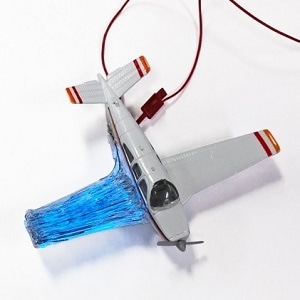Sep 30 2019
MIT researchers have developed a new 3D printing method containing multi-material fiber to produce functioning devices with embedded circuitry for biomedical and robotic devices.

The system uses conventional 3D printers outfitted with special nozzle and new filament to replace the usual single-material polymer filament. The new filament has complex internal structure made up of different materials arranged in a precise configuration and is surrounded by polymer cladding on the outside.
The nozzle in new printer operates at lower temperature and pulls the filament faster than conventional printers so that outer layer gets partially molten and the interior stays cool and solid, with its embedded electronic functions unaffected. The surface melts enough and it adhere solidly to adjacent filaments during the printing process, to produce a sturdy 3D structure.
The internal components in the filament include:
- metal wires that serve as conductors
- semiconductors that can be used to control active functions
- polymer insulators to prevent wires from contacting each other.
The team printed a wing for a model airplane for demonstration using filaments that contained both light-emitting and light-detecting electronics. These components could potentially reveal the formation of any microscopic cracks that might develop.
Increased Efficiency and Flexibility
Loke commented that the filaments used in the model wing could contain more than eight materials. He also said printers capable of depositing metals, semiconductors, and polymers in a single platform did not existed as printing these materials required different hardware and techniques.
The method is faster, offers flexibility in manufacturing various forms and is able to construct devices of any freeform shapes.
Fiber Processing
The method uses thermally drawn fibers which has various materials embedded within them. An array of fibers with electronic components within them which allows fibers able to carry out a variety of functions by Fink, Professor of Materials Science, Electrical Engineering & Computer Science, CEO of the non-profit Advanced Functional Fabrics of America, and Associate Director of the Research Laboratory of Electronics and his collaborators.
This new process made these new fibers available as the raw material for producing functional 3D devices that can sense, communicate, or store energy, among other actions.
To make the fibers firstly various materials are assembled into a larger-scale version called a preform, which is then heated and drawn in a furnace to produce a narrow fiber that contains all those materials, in their exact relative positions but greatly reduced in size.
A wide array of fibers has been developed containing different materials and functionalities which can be adapted for the new 3D-printing technique to print objects with variety of different combinations of materials and functions. The device uses standard fused deposition modeling (FDM) 3D printer.
Applications of Multi-material fibers
The method could be used to develop further to produce variety of devices especially where the ability to precisely customize each device is essential such as in:
- biomedical devices to print prosthetic limbs with all electronics to monitor and control the limb embedded in place,
- print materials for biomedical implants to provide scaffolding for the growth of new cells to replace a damaged organ, and include within its sensors to monitor the progress of that growth,
- prototyping of devices with functionality, rather than being static models.